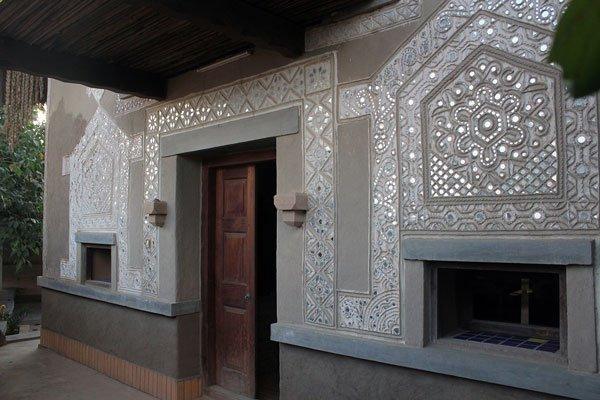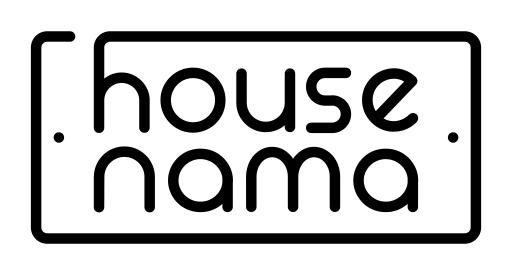
Lipan Kaam with love from Kutch #HandmadeInIndia
Share
If you travel through Kutch (and for the love of art and natural untamed beauty you must), you will most definitely be tempted to stop time and again at different villages and towns to admire the arts and crafts of this ancient part of Gujarat.
As you make your way through the vast stretches of the Indian side of the world’s greatest salt desert (the Great Rann of Kutch) found in India and Pakistan, you will come across the odd bhunga (mud house) with walls beautifully-decorated in mostly circular mirror-work. This is Lipan Kaam.

History of Lipan Kaam
Mud and mirror work is known as Lipan Kaam. It is a traditional mural craft of Kutch. It is also called as Chittar Kaam. The origins of Lipan Kaam are unknown. Various communities in Kutch do mud-relief work and have their own distinct style of lipan kaam. This makes it even harder to trace the roots of Lipan Kaam.
History of Lipan Kaam
In the Gujarati language,
- Lipan = mud-washing
- Kaam = work
Production Cluster
| Lipan is from Kutch district: Ludiya, Gorewali, Banni, Baniari. |
Lipan Kaam, the home of Kutch
Most communities in Kutch live in circular mud houses known as Bhungas. They have thatched roofs. These dwellings have evolved over the years to take on the harsh climatic conditions of Kutch. Generally speaking, Bhungas are made of clay alone or bamboo chips plastered with lipan, a mixture of clay and dung. The roofs are wood-based and thatched.

Areas of the bhunga where you’ll typically find lipan kaam:
- Kotholo – Large storage granaries
- Sanjiro – Large storage for valuables and clothes
- Kothi – Cylindrical grains storage
- Dhadablo – Seat for babies
- Utroni – Clay stand
- Chula – Portable hearth
- Paniyara – Clay platforms
- Pedlo – Platforms on which the storage bins are placed
- Decoration on Walls, Alcoves, Plinths, Shelves, Windows
Lipan Kaam – the materials and the process
The dung used is that of a camel or wild ass and acts as a binding agent as it is rich in fibres. The clay used is mud which has been passed through a sieve to obtain fine particles that mix more easily. Equal proportion of dung and clay are mixed and kneaded to form the dough used for lipan kaam. (In conversations with those who practice lipan kaam, some have mentioned the use of husk of Bajri i.e. millet as an alternative to the dung. While the dung attracts termites, the husk does not.)
Watch how an old lady makes lipan come to life and talks about life in the land of lipan kaam. This is seven or so minutes of beautifully handmade in India.
Small portions of the dough are taken and shaped into cylinders of varying thickness by rolling between the palms or on the floor. This is then pasted on to the moist surface i.e. the wall or wooden panel on which the decorative artwork is to be done. Each artwork usually starts by using the dough to first create lines that define the boundary of the artwork. Motifs are then created in bas-relief (sculpture in which the figures project slightly from the background) mostly freehand by memory by using palms and fingers pinching and shaping the mud mixture.

The motifs are inspired from the rich and famous embroidery patterns and once the walls are done they look stunning with mirrors embedded in the mud work, much like the embroideries itself. The mirrors used are called aabhla and come in various shapes – round, diamond & triangular.
After the clay dries off in about 4-5 days, a layer of white clay is painted over the artwork. The white comes from the sand of this marshland that is rich in salt content. Though the authenticity of Lipan Kaam lies in a completed piece that is all white or in shades of neutrals; bright colors like red and green are sometimes painted on the dried clay work.
Did you know…
…that there is a wild ass sanctuary in the Little Rann of Kutch region – perhaps the only one found anywhere in the world? Now that explains the popularity of wild ass dung in Lipan Kaam.
More than just a pretty face
Lipan Kaam is not only for decorative purposes. It also has a function integral to the lives of the people of the region.
- Lipan kaam on the outer surface of the homes acts as an insulator by reflecting heat. This helps keep the interior of the home cool. The beauty of the handiwork is enhanced by its utility even more.
- Inside the home, the inner walls are adorned with decorative mud-mirror work. These mirrors are there for a very good reason. A single lamp proves enough to light up a considerable part of the home, thanks the light reflected from the glittering mirror-work.
- Speaking of pretty faces, lipan work evolves as the women work together, singing songs, and teasing one and another, while the men perform the task of digging the clay and carrying it from its source to the worksite or storage hut. This sense of community and fun adds so much to the art. It is one of the finest examples of improvised creativity that works on multiple levels.
Designs on Lipan Kaam
Lipan Kaam is usually seen in the graceful forms of peacocks, camels, elephants, elegant water bearing women, joyous women churning buttermilk, symbolic temples, mango trees, and other examples of life in the Kutch.

The lipan on the walls, partitions, doorways, lintels, niches, and the floors of the bhunga sport elaborate bas relief decorations that consist of okli-textures created by the impressions of fingers and palms-and sculpted forms that are inlaid with mirrors.

Understandably, the Muslim communities stick to graphic and eye-catching geometric patterns of lipan kaam; depicting the human or animal form is considered deeply un-Islamic.
Going places with Lipan Kaam
The craftsmen are now teaching students to adapt the design on a piece of plywood. The earlier dried camel/donkey dung base is pungent-smelling. The introduction of a new base material is helping lipan kaam spread across geographies. In fact, the art now finds a pride of place in modern homes/workspaces in the form of wall decor.

Also, read about the lipan kaam done on the wall of a spa in this blog.
Home Improvement
And if you’d like to try your hand at this handicraft at home, here’s an user-friendly video you can check out for a how-to on lipan kaam at home. Go ahead, this is more than just safe to try at home.
Finally, this is what you get at the end of the video tutorial:

Some more DIY: Additional Tutorial #1 | Additional Tutorial #2 | Additional Tutorial #3
Some free patterns to printout: Free Lipan Kaam Pattern #1 | Free Lipan Kaam Pattern #2 | Free Lipan Kaam Pattern #3
Bollywood & Lipan Kaam
If you have grown up on Indian Bollywood movies you would recall Kareena Kapoor in “Refugee” taking refuge in this art form decorating the walls of her home with a song on her lips while waiting for her beloved to come across the pristine white salt desert.

Lipan Kaam on Housenama
Research Links
- Artnlight Blog: Inside a Bhunga hut, Bhuj
- Art and Craft School Blog: Lippan work /mud and mirror work
- Baaya Design: Craft Catalogue
- CraftCanvas: Kutch on a spa wall..
- CraftCanvas: Part 2: Kutch, land of colours
- Crafts Council of India: Indian Crafts Map – Gujarat
- Design Decor & Disha Blog: DIY Lippan Work: Video Tutorial
- Design Decor & Disha Blog: Indian Art: Lippan Work (Gujarat & Rajasthan Art)
- Design Decor & Disha Blog: Lippan Work Wooden Panels
- Design Membrane Blog: Experiments with random materials: Lippan Kaam
- Design Nonstop Blog: God lies in details
- D’source: Design Resources on Lippan Kaam – Kutch
- Gaatha: Mirrors, mirrors on the wall…
- Handmade in India: A Geographic Encyclopedia of India Handicrafts by Aditi Ranjan & M.P. Ranjan
- Handmade Talks Blog: Mudwall painting – Lippan art work
- Happy Thoughts of a Happy Go Lucky Soul Blog: Rann Utsav and the White Rann of Kutch
- Life is a Vacation Blog: Mud Mirror Art from India
- Lively-wood Blog: Kutchchy Ethos
- The Sandalwood Box Blog: Lippan Kaam (Mud Mirror Work)
Note: To browse through all the posts in the ‘Handmade in India’ series, click here.
